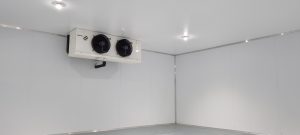How Long Does a Cold Room Last?
The Lifespan of a Cold Room: Factors to Consider
Cold rooms play a crucial role in various industries, including food storage, pharmaceuticals, and research. These controlled environments help preserve the quality and integrity of products that require specific temperature conditions. However, like any equipment, cold rooms have a finite lifespan influenced by several factors. In this article, we will delve into the key considerations that determine how long a cold room lasts and how proper maintenance can extend its operational life.
1. Quality of Construction and Materials
One of the primary factors influencing the lifespan of a cold room is the quality of its construction and the materials used. Cold rooms designed and built with high-quality materials and precise engineering tend to have longer lifespans. Materials that offer superior insulation properties and durability, such as reinforced panels and advanced insulation foams, contribute significantly to the longevity of the cold room. When selecting a cold room, it’s important to opt for a reputable manufacturer that uses top-notch materials and construction techniques.
2. Environmental Conditions and Usage
The environmental conditions in which a cold room operates directly impact its lifespan. Cold rooms located in harsh environments with extreme temperature fluctuations or high humidity levels may experience accelerated wear and tear. Additionally, the frequency and duration of usage play a role. Cold rooms subjected to frequent door openings or rapid temperature changes may experience more strain, potentially reducing their lifespan. Properly maintaining consistent environmental conditions and adhering to recommended usage guidelines can help extend the cold room’s operational life.
3. Maintenance and Upkeep
Regular maintenance is a key factor in prolonging the lifespan of a cold room. Routine inspections, cleaning, and servicing of components such as compressors, evaporators, and temperature controls are essential to ensure optimal performance. Dust, debris, and ice buildup should be regularly removed to prevent strain on the system. Furthermore, addressing minor issues promptly can prevent them from escalating into major problems that could lead to costly repairs or premature replacement. Collaborating with qualified technicians and following the manufacturer’s maintenance recommendations can significantly increase the cold room’s longevity.
Extending the Lifespan of Your Cold Room
To maximize the lifespan of your cold room and ensure its continued efficient operation, consider implementing the following strategies:
1. Temperature and Humidity Control
Maintaining consistent temperature and humidity levels within the cold room is vital. Fluctuations in these parameters can lead to increased stress on the components and insulation, potentially shortening the cold room’s lifespan. Use accurate monitoring systems and invest in automated controls to regulate the internal environment effectively.
2. Proper Loading and Organization
The way products are loaded and organized within the cold room can impact its efficiency and longevity. Avoid overcrowding shelves and racks, as this can obstruct airflow and strain the cooling system. Proper organization ensures even air distribution and reduces the workload on the equipment.
3. Regular Inspections
Scheduled inspections by trained personnel should be conducted to identify and address any emerging issues promptly. These inspections can help detect signs of wear, corrosion, or malfunction, allowing for timely repairs and preventive measures.
4. Timely Repairs and Replacements
When components show signs of deterioration or malfunction, it’s essential to address them without delay. Prompt repairs and replacements prevent further damage and help maintain the cold room’s overall efficiency and performance.

5. Training and Education
Ensure that personnel who interact with the cold room are well-trained in its operation and maintenance. Proper handling and care, such as gentle door closing and correct shelving practices, can contribute to minimizing wear and tear.
Conclusion
The lifespan of it is influenced by a combination of factors, including construction quality, environmental conditions, usage patterns, and maintenance practices. By investing in a well-constructed cold room, maintaining optimal environmental conditions, and adhering to a rigorous maintenance schedule, you can extend the operational life of your cold room and make the most of your investment. A proactive approach to upkeep and a focus on proper usage will not only save costs in the long run but also ensure the reliability and effectiveness of it for years to come. https://commgen.com.au/about-us/

Recent Comments